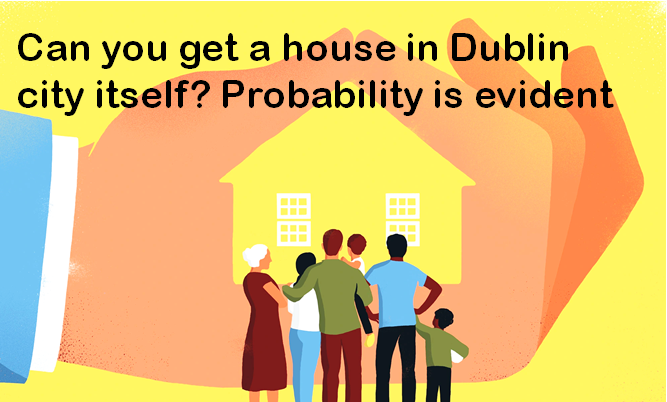Dublin: Dublin, Ireland’s capital city, is the country’s most important centre for the Indian community. Thousands of Indians are currently employed in Dublin. Many of them who work in the health, IT, pharmaceutical, and financial sectors aspire to build their own home in Dublin.
In the current state of the country, however, the majority of them are migrating to medium-sized cities around Dublin. According to official statistics, the majority of those who have migrated to neighbouring counties like Kildare, Wicklow, Meath, and Louth are of Indian origin.
But the latest news is that more houses are on the way within Dublin city limits, led by the Archdiocese of Dublin. The Archdiocese is willing to develop affordable social housing projects on land owned by the Church’s 32 parishes.
An application has been submitted to the Archdiocese and Dublin City Council to include these areas in the Residential Zoned Land Tax for this purpose.
The archdiocese made this decision in response to the government’s proposal to levy a new tax on vacant buildings, lands, and houses. If the project is approved by the government, thousands of acres of land in prime city locations will be cleared for housing.
St. John the Baptist Church in Clontarf Road, St. Agnes Church in Crumlin, and Our Lady Queen of Peace in Merrion Road, Dublin 4, are among the churches listed by the council. Another 29 Dublin churches are among hundreds of sites designated for inclusion in the residential zoned land tax in draft maps published in November by the city council and other local authorities. The Laurence O’Toole Diocesan Trust of the Archdiocese of Dublin submits applications with the intention of using them for community activities and social and community interests.
As part of the search for a solution to the worsening housing crisis, a new tax on property owners on unused land will also put thousands of sites on the public market for housing.
The government has decided to levy a tax of 3 percent of a property’s market value on sites that remain idle despite being zoned for housing and providing services such as water. Hundreds of property owners, including the archdiocese, have petitioned the government to include their properties in the housing zone, which would exempt them from the law, which takes effect next year. This phenomenon has spread throughout the country, not just in Dublin.
Where are the spaces available?
The following main church sites are among the 32 ecclesiastical properties listed by Dublin City Council.
St Matthew’s Church, Our Lady of Assumption Church (Ballyfermot)
Church of the Holy Name on Beechwood Avenue; (Ranelagh)
St Joseph’s Church, Berkeley Road;
Church of the Nativity of the Blessed Mary in Chapelizod
Our Lady of Dollars Church on South Circular Road;
Donnybrook Sacred Heart Church on Stillorgan Road;
Church of the Visitation of the Virgin Mary, Fairview;
Church of St. Nicholas of Myra, Francis Street
Apart from these, some school and Catholic university properties are also on the list. Other monastic communities are also in the same predicament. The government is now implementing a policy of forcing unused properties to be used. Converting them for housing will solve Ireland’s biggest development crisis, especially in Dublin.
News by Regi. C. Jacob
Irish Samachar English News
Kindly click the link below to join WhatsApp group chat to get important news and breaking news from Irish Samachar.


Comments are closed.